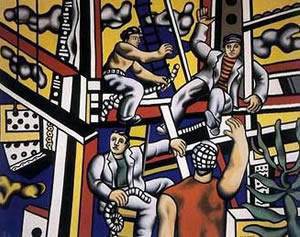Franz LisztPiano Concerto no. 1 in E-flat Major (page 3)Copyist’s manuscript with extensivecorrections and revisions in Liszt’s hand,[1850s?]Robert Owen Lehman Collection, ondeposit, The Morgan Library & Museum
Franz LisztAutograph letter to [Franziska Elisabethvon Bülow] dated Weimar, 24 October1855mfc L774.B939; The Mary Flagler CaryMusic Collection, The Morgan Library& Museum
LISZT IN PARIS: ENDURING ENCOUNTERS
AT THE MORGAN LIBRARY & MUSEUM – August 29 through November 16, 2008.
Rare Music Manuscripts, First Editions, Letters, and Related Materials ExaminePianist-Composer Franz Liszt’s Relationship to the Extraordinary Artistic Milieu ofNineteenth-Century Paris
]]>
When the twelve-year-old Franz Liszt (1811–1886) arrived in Paris in1823 with his parents, he had already astounded audiences with his extraordinary musical gifts in his nativeHungary, as well as in Germany and, most notably, Vienna, where Beethoven anointed him with a kiss onthe forehead. Not long after his arrival in Paris, he would also amaze the sophisticated cultural community ofthe City of Light.
Through nearly fifty manuscripts, first editions, letters, and related materialsdrawn almost entirely from the collections of The Morgan Library &Museum, the new exhibition Liszt in Paris: Enduring Encounters celebrates theart and the diverse and fertile artistic world of the virtuoso pianist-composer.The exhibition is on view in The Engelhard Gallery at the Morgan fromAugust 29 through November 16, 2008.
Despite his fame and talent, when Liszt arrived in Paris, he was refusedadmittance to the Conservatoire because of a recent ruling banning foreigners.Nonetheless, Paris remained Liszt’s home base for many years. By the 1830s,Liszt was a fixture both on the concert stage and in Paris’s artistic andaristocratic circles. He came into contact with the leading novelists, poets,painters, and musicians of the day, among them Eugène Delacroix (1798–1863), Alexandre Dumas (1802–1870), Heinrich Heine (1797–1856), Victor Hugo (1802–1885), Felix Mendelssohn (1809–1847), GiacomoMeyerbeer (1791–1864), Gioacchino Rossini (1792–1868), and Ary Scheffer (1795–1858).
“Paris has always been a beacon to the creative mind, and the first half of the nineteenth century was anespecially vibrant time,” said William M. Griswold, director of The Morgan Library & Museum. “Liszt, likeso many other artists of the day, was drawn to this artistic milieu. The exhibition brings this extraordinarycommunity to light, celebrating the greatness of Liszt and the period.”
Exhibition Highlights
The show begins by introducing Franz Liszt as the prodigy who at an early age was already composing aswell as concertizing. The section includes an edition of his first published work written at the age of elevenand a playbill for a concert at which Liszt performed a “New Fantasia on Piano-Forte,” at the TheatreRoyal, Covent Garden, in London at the age of fifteen.
The viewer is then introduced to the maturing Liszt and his encounters with fellow musicians Berlioz,Chopin, Paganini, and later Wagner. Liszt met Hector Berlioz (1803–1869) on December 4, 1830, the eveof the premiere of the Frenchman’s Symphonie fantastique. Liszt’s transcription (published in 1834) andperformances helped popularize the piece, which was not published in its original form until 1845. Both analbum leaf in Berlioz’s hand containing the waltz theme from the second movement and an early edition ofthe orchestral score are on view.
Berlioz, whose Le Roi de Thulé (the text taken from Goethe’s Faust) was later incorporated into hisDamnation de Faust, shared with Liszt his love of Goethe’s work and dedicated the opera to him. Lisztreciprocated by dedicating his Faust Symphony to Berlioz. The autograph manuscript of Le Roi de Thulé andthe piano-vocal score of La Damnation de Faust is joined by Delacroix’s drawing Mephistopheles Appears BeforeFaust. Also highlighted in this section is the autograph manuscript of Liszt’s First Piano Concerto, a workthat received its premiere in 1855 in Weimar (where Liszt had moved after being appointed director ofcourt music) with Liszt as soloist and Berlioz conducting.
Liszt met Frédéric Chopin (1810–1849) shortly after the latter’s arrivalin Paris in September 1831 and attended his Paris debut at the SallePleyel on February 26, 1832. Displayed along with the playbill for thisconcert are the first piano solo edition of Chopin’s Piano Concerto, op.11, and the autograph manuscript of his “Là ci darem la mano”variations, both pieces among those that Chopin performed at hisdebut. Their friendship also led Chopin to dedicate his Études op. 10to his fellow pianist. Both the first French edition of the completeOpus 10 as well as the autograph manuscript of Opus 10, no. 3, are featured in the exhibition, along withLiszt’s 1852 appreciation and biography of Chopin.
In Paris Liszt heard the violinist Nicolò Paganini (1782–1840) for the first time in 1832. Impressed byPaganini’s virtuoso technique, Liszt immediately set about translating the violinist’s exceptional artistry forthe piano. The result was the fiendishly difficult Grande Fantaisie de bravoure sur “La Clochette” de Paganini.Paganini’s 24 Capricci was another point of departure, forming the basis for Liszt’s Grandes Études de Paganini.All three scores are featured in the exhibition.
In 1841, at the Paris Conservatoire, Liszt performed Beethoven’s Emperor Concerto with Berliozconducting. In attendance was Richard Wagner (1813–1883), who reviewed the performance for theDresden Abend-Zeitung. Liszt was to become one of Wagner’s staunchest supporters (and eventually hisfather-in-law). He premiered Wagner’s opera Lohengrin at Weimar in 1850. After Wagner’s death inFebruary 1883, Liszt composed Am Grabe Richard Wagners on May 22, which would have been Wagner’sseventieth birthday. Liszt’s essay on Lohengrin, the first edition of the opera’s libretto, and the autographmanuscript of Am Grabe Richard Wagners are also on view.
In addition, the autograph manuscript of Schubert’s Erlkönig (text by Goethe) will be displayed alongsideLiszt’s published transcription of the song for piano. Similarly, Liszt’s manuscript for Mignons Lied (text byGoethe) can be compared to the proofs of the Schlesinger edition. Works setting texts by Heine (Du bist wieeine Blume) and Dumas (Jeanne d’Arc au bûcher) are also highlighted.
Liszt in Paris: Enduring Encounters is organized by Frances Barulich, Mary Flagler Cary Curator of MusicManuscripts and Printed Music, The Morgan Library & Museum..
Follow us on:


